May 21, 2025 | 02:55 GMT +7
May 21, 2025 | 02:55 GMT +7
Hotline: 0913.378.918
May 21, 2025 | 02:55 GMT +7
Hotline: 0913.378.918
Mr. Luong Trung Tuyen, Director of the Agricultural Cooperative in Bao Yen commune, Thanh Thuy district, Phu Tho province, mentioned that about 20 years ago, re-grown rice, often referred to locally as "Ratoon rice" was harvested by those who put in the effort.
Back then, rice grains were valuable, so people erected tents right in the fields to prevent cattle from trampling the re-grown rice. On average, each family managed around 10 arce. After that period, locals gradually began renting fields during the off-season to release fish. Contractors then harvested the re-grown rice or released ducks to maintain water levels for fish feeding, reducing the need to purchase bran. Mr. Nguyen Van Thang in Area 3 of Bao Yen commune both released fish and monitored re-grown rice, harvesting tons of rice per crop.
In recent years, despite renting fields to release fish, most residents of Bao Yen commune still mostly harvest re-grown rice. Currently, about 10 people per area engage in harvesting re-grown rice like this. With rice no longer as valuable as before, there is no longer a need to erect tents for monitoring. On average, each Sao of re-grown rice yields approximately 50 kg of rice.
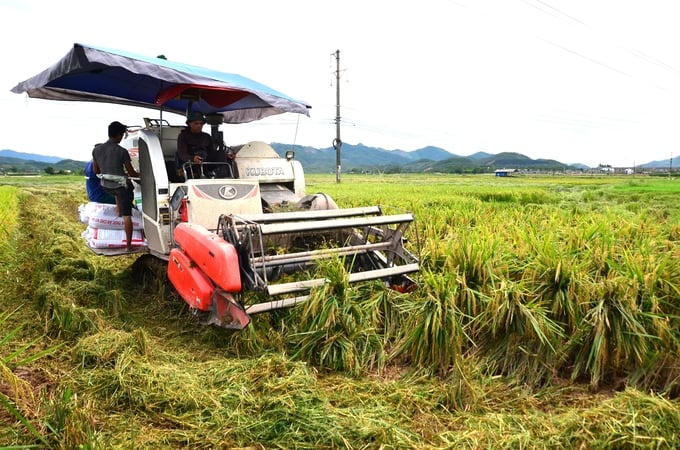
The chains of the combine harvester crush the rice stalks, making them unable to re-grow. Photo: Duong Dinh Tuong.
When manual harvesting was common, the re-grown rice area in Bao Yen commune reached up to 150 ha. Since the adoption of machine harvesting, this area has shrunk to about 50 hs, concentrated mainly in fields near pagodas, Dong Trang, and Dong Thang. Meanwhile, the area for "one rice, one fish" farming has expanded, now covering 187 ha (including 50 ha of re-grown rice suitable for harvest). The remaining land is either damaged by the harvester's chains or submerged too deeply for re-grown rice to develop.
Due to a shortage of labour, machine harvesting has become an inevitable trend in rural areas today. Bao Yen commune has recently received support from Thanh Thuy district and the agricultural sector to develop a rice cultivation model applying VietGAP standards on 30 ha, involving 140 households. Participants receive technical training and use the same Thuy Huong 308 rice variety while reducing chemical fertilizers and pesticides, yet achieving yields of 2.6 to 2.7 tons/Sao.
However, because most labourers are elderly, they are reluctant to maintain accurate records as required by VietGAP. More importantly, VietGAP-certified rice sells at regular market prices without any specialized buyers, posing a significant challenge to sustaining and expanding the area under this standard.
Moreover, severe labour shortages recently led to significant damage from heavy rain and strong winds, causing many rice fields to collapse. Despite this, local residents are determined to rebuild and await machine harvesting, refusing to resort to manual harvesting for re-grown rice as they did in the past. When I visited, the massive combine harvesters moved like giant crabs, their sharp claws thrusting into each large rice cluster, leaving muddy tracks and shattered stalks in their wake.
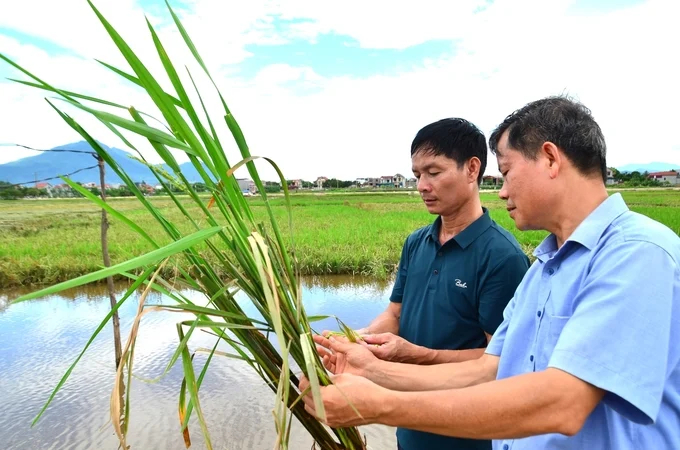
In Bao Yen, there are only about 50 ha of re-grown rice left. Photo: Duong Dinh Tuong.
Mrs Luong Thi Tuyen in Area 3 (Bao Yen commune) mentioned that wherever straw floats on the surface of the field after machine harvesting, there is no re-grown rice left, just a grey muddy colour. Sparse patches of green are visible only in fields where re-grown rice is manually harvested. Previously, Mrs. Tuyen planted over 1 hectare of rice, and after the spring harvest, she left it for re-growth, yielding 6 to 7 "quintals" of rice. However, in recent years due to machine harvesting, she hasn't been able to yield as much, and she has had to let others watch over and harvest the fields.
In the past, when fields had less water, residents of Bao Yen commune used to apply a few kilograms of fertilizer for re-grown rice. However, now contractors release fish and flood the fields, so there is no longer any fertilization.
Re-grown rice in Bao Yen during the off-season now doesn't yield as much economic benefit as before, but it still provides environmental advantages by avoiding the use of chemical fertilizers and pesticides. Re-grown rice also creates conditions for sustainable aquaculture development in these fields, promoting organic, cyclical, and ecological agricultural practices. There are over 10 households involved in releasing fish on the fields, ranging from those managing 20 acres to 40-50 acres. They rent fields from local residents from June 1st to December 1st and return them for re-planting, with an average payment ranging from VND 100,000 - 120,000/Sao.
Mr. Nguyen Van Quy manages 37 mu of fields jointly with his brother-in-law Nguyen Duc Dan for fish release. Previously, when farmers harvested manually, re-grown rice never suffered from rotten rice stalks, so fish raised in the fields were very healthy and grew rapidly. Now, with machine harvesting causing rotten stalks and deteriorated water quality leading to oxygen depletion, it has resulted in suffocation and death for the fish.
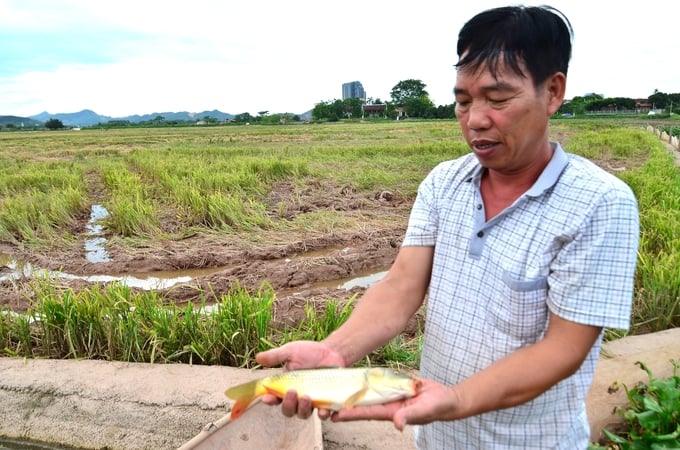
Mr Tang Van Binh checks the fish prepared for release into the fields. Photo: Duong Dinh Tuong.
In 2021, my brothers and I lost 4.5 tons of fish due to a lack of rain, leading to water in the fields becoming stagnant and polluted, especially on days when there was a power outage and the aerators couldn't function. In 2023, we lost over 2 tons of fish under similar circumstances. Previously, we used to harvest 16 to 17 tons of fish annually, but now there are years when we barely reach half of that.
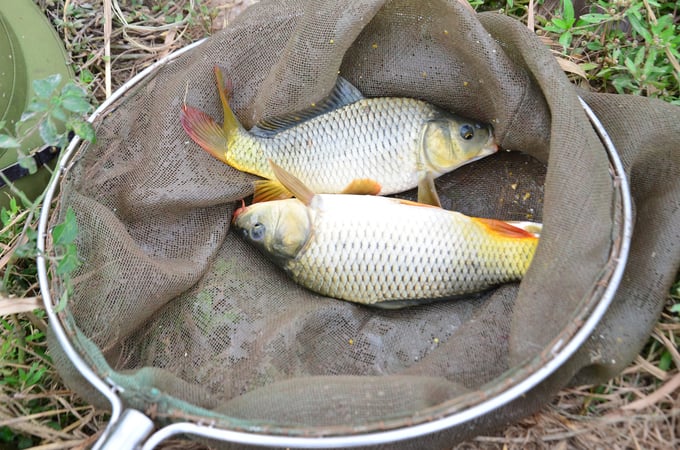
Fish ready to be released into the fields. Photo: Duong Dinh Tuong.
"Previously, before we started fish farming during the off-season, the fields were very overgrown. Farmers had to hire people to weed and plough, which was quite costly. Now, after we finish raising fish and return to the fields, local residents can directly sow seeds without needing to weed or plough. We have a contract every 5 years, with a price of VND 100,000 - 120,000/Sao/season, benefiting both sides", analyzed Mr Binh.

The combined fish and duck farming area in Mr. Tang Van Binh's field. Photo: Duong Dinh Tuong.
Translated by Hoang Duy
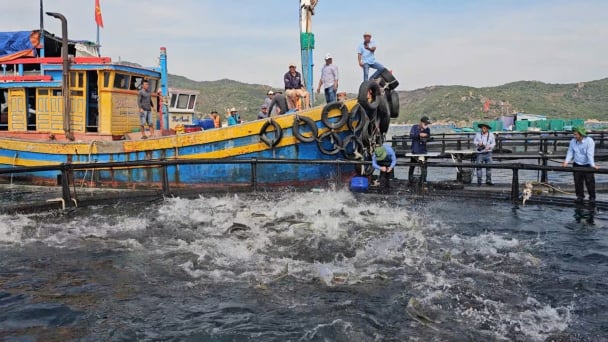
(VAN) Khanh Hoa is investing over 545 billion VND to develop 240 hectares of high-tech marine aquaculture in order to guarantee a consistent supply of seafood exports and achieve the USD 1 billion target.
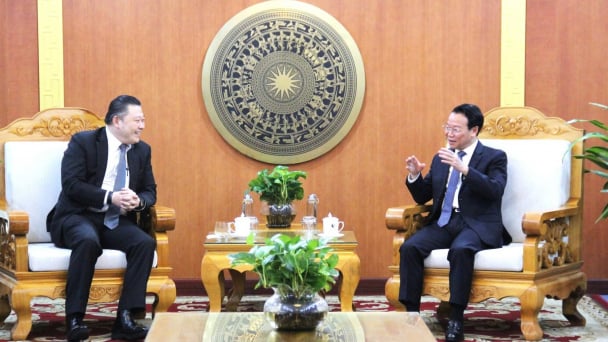
(VAN) Minister of Agriculture and Environment Do Duc Duy held a meeting with Soopakij Chearavanont, Chairman of C.P. Group, on May 15.
/2025/05/16/3800-0-nongnghiep-143756.jpg)
(VAN) Suntory PepsiCo Vietnam coordinated with the Ministry of Education and Training to implement an education program on water conservation, reaching nearly 1 million primary school students nationwide.
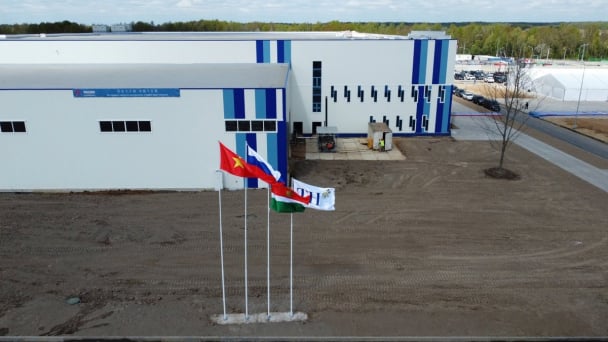
(VAN) Vietnam’s TH Group officially put its high-tech fresh milk processing plant into operation in the Russian Federation, marking a historic moment as the first TH true MILK cartons were produced in Russia.
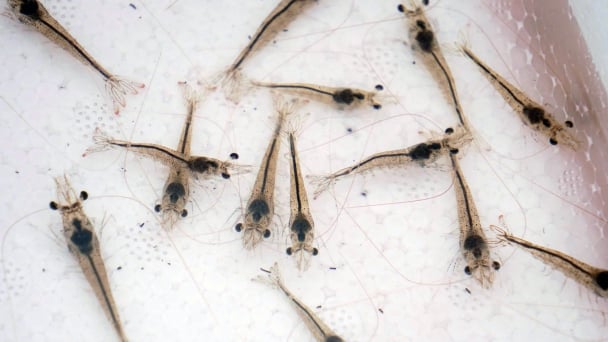
(VAN) Use of high-quality broodstock and biotechnology is regarded as the most effective approach to ensuring sustainable and economically viable shrimp aquaculture ahead of climate change and the emergence of increasingly intricate disease patterns.
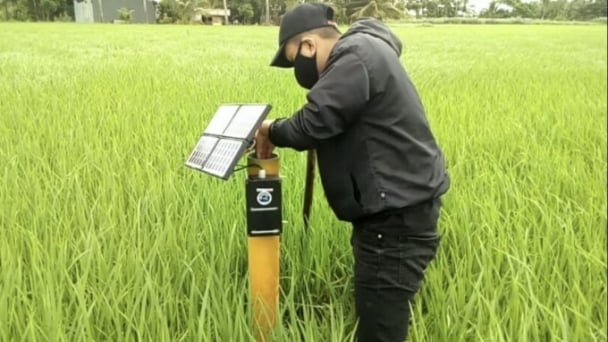
(VAN) Carbon farming is a form of agricultural practices that helps absorb more greenhouse gases than it emits, through smart management of soil, crops, and livestock.
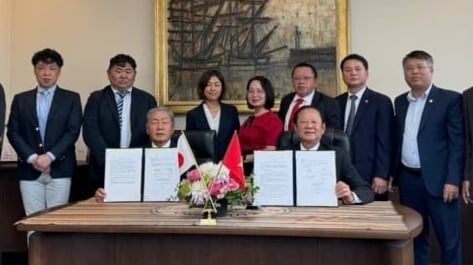
(VAN) This is a key content of the Memorandum of Understanding recently signed between the Vietnam Fisheries Society and Kunihiro Inc of Japan.